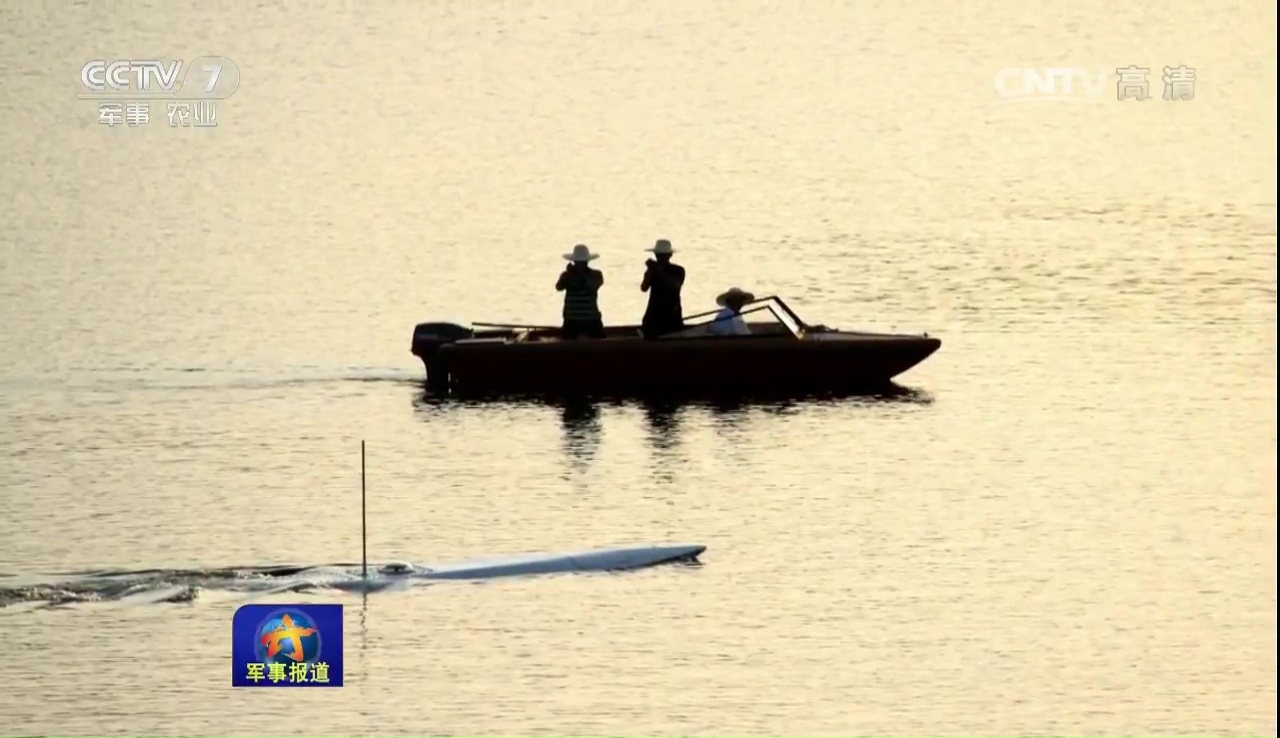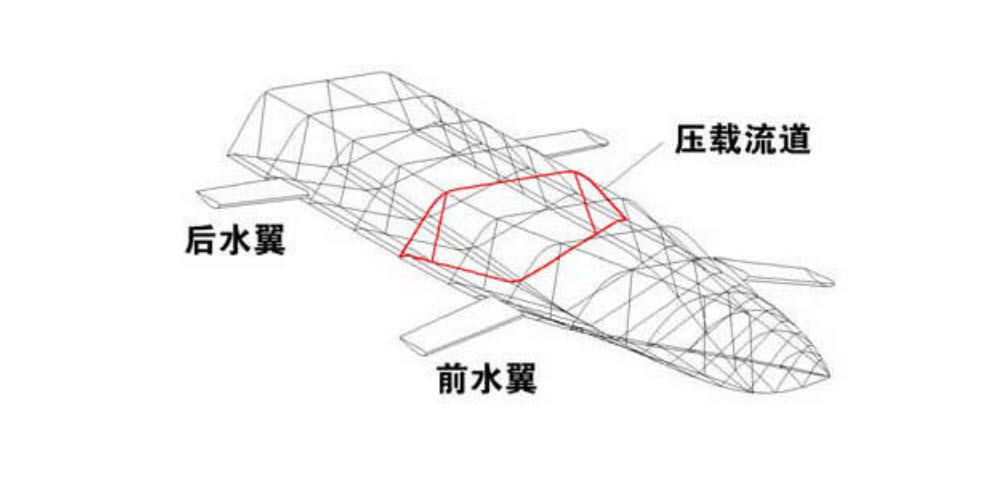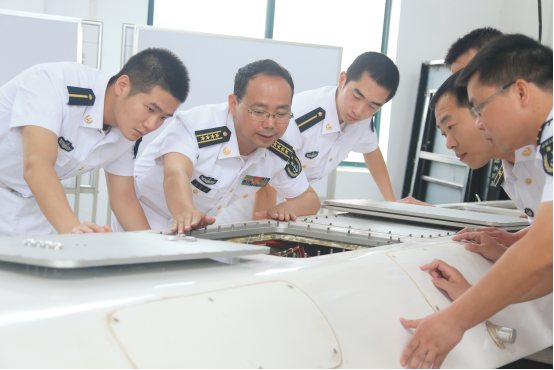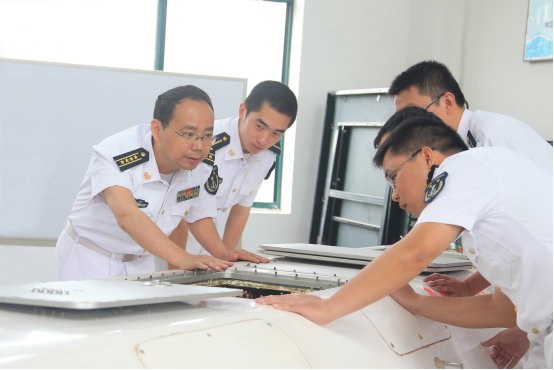Has China revived the Arsenal Ship, but in semi-submersible?
China might be designing a new class of warship that incorporates, at least in part, the concept of the Arsenal Ship but in the form of semi-submersible. This is in any case what lets believe a new rumor circulating since last week.
According to this Chinese source, the project of a platform "omni-roles" whose displacement exceeds "thousands of tons" would be launched.
The image broadcast by the same source thus draws a semi-submersible vessel having two massifs, situated at the front and at the rear, and between which there are a number of vertical launching silos.
The author also states that the vessel can not fully dive underwater, and is capable of operating alone without being accompanied by a carrier group, to address air, submarine and naval targets And on the ground.
So is this another amateur fantasy "putaclic", as some said, to dream of doing as "the great" in his time with the grandiose concept of the Arsenal ship?
Well, maybe not for this time.
It was in August 2016 when we saw a funny crook in a local television report, which pays tribute to a teacher-researcher of the University of Engineer of the Chinese Navy, Age of 49 years. According to the presentation, man contributed greatly to the study of the hydrodynamics and navigation performance of military ships in China.
Sketch appeared in a televised report on Professor DONG Wen Cai (excerpt: 新闻 新闻)
After the exchange with a friend, naval design expert, about what he might be like ship type, the latter thinks it is a "small froud high barcass with total resistance equation Rt therefore of the non-archimedean drag, with a semi-gliding V shell with lateral volumes (ballasts ??), and a double pair of non-retractable stabilizers with different dimensions ".
"... in short the guy (a hydro) bump on a fast boat project ...", he adds.
Several avenues had been put forward in our discussion - a new tanker to follow a carrier group, a kind of semi-submersible rapid infiltration like the
I-SILC model used by the North Koreans, or
a semi-submersible like the one constructed In 2013 for the Israeli Navy to replace the Alligator class .
But none of these assumptions seems totally convincing.
A few days later, Chinese television channel CCTV-7 broadcast another report on the same researcher DONG Wen Cai (董文 才), and you can see in a passage a three-to-four-meter-long drone ship, probably one Prototype, testing at the lake.

Testing a small semi-submersible to the lake (CCTV-7 image)
Curiosity leads us to dig deeper into the final subjects of study of this Chinese military researcher, who has been awarded four national awards for his research and who has directed the work of some twenty doctoral students.
It was then learned that DONG had been working for ten years on two main themes - the active reduction of the drag by the formation of a layer of bubble under the hull, and a new conceptual platform called
HSWPVW (High Speed Wave Piercing Vehicle with Wings), which combines the concepts of high-speed monohull, piercing hydrofoil and semi-submersible.
This second theme was the subject of
a major subject financed by the NSFC , a foundation directly attached to the State Council, chaired by the Chinese Prime Minister, between 2009 and 2011.
According to some academic documents co-authored by DONG published, the HSWPVW is a ship that is designed to swap between 4 different modes of navigation depending on the needs - immersed at periscopic depth, semi-submersible, surface navigation at normal speed , And semi-hovering at high speed.

The conceptual platform section HSWPVW (Image: NSFC)

The 4 navigation modes of the HSWPVW platform (Image: NSFC)

Tests at different speeds of a HSWPVW model (Image: NSFC)
After a few years of preliminary theoretical studies, the research of the team of the Chinese Naval Engineering University, led by DONG and assisted by the 701 Institute of the Chinese naval group CSIC, seem to have taken great strides and Completed the demonstration trials in October 2013, with
a small-scale remote-controlled ship weighing about a ton .
Some research findings have been directly applied in the development of "thousands of tonne" vessels, according to the report submitted to the NSFC committee.
An article published in September 2016 by the Xinhua news agency gives even an important clarification on these tests - it was the technological demonstration phrase of a major (military) project called "New Rapid Fight Platform".

The Demonstration Vessel (Photos: 新华网)

The death of DONG in January 2016 means that we no longer heard about the rest of the project, at least in the press. But another very emblematic military researcher, Mr. A. Wei Ming (马伟明), a specialist in electrical engineering and naval propulsion of the Chinese Navy and academician at the Chinese Academy of Engineering, referred
in April this year to the notion of "omni Roles " , which" will upset the style of existing naval combat ".
This "all powerful" ship is like the Arsenal ship, a concept emerged in 1988 in the United States and supported by Jeremy BOORDA, former admiral and 25th chief of naval operations of the US Navy, whose objective is to propose An alternative solution to the projection capabilities that a carrier group represents around aircraft carriers.
Like the American Arsenal ship, MA speaks of a ship whose combat radius extends up to 1,000 km, with numerous missiles and directed energy weapons, made possible thanks to the recent advances in the electromagnetic field in China.
It is not known for the moment whether there is a direct link between the project of this "new rapid combat platform" HSWPVW on which Professor Dong works and the "omni-roles ship" evoked by MA, Already assume that the Chinese navy is studying very actively on its fighting ships the day after tomorrow, while a new generation of Chinese first-line ship - such as
Type 4104 Type 054B frigate , medium
destroyer Type 052D Of 6,000 tons, and the
Type 055 multi-purpose destroyer of 12,000 tons to name but a few - is currently under construction.
Is it realistic and feasible to design an Arsenal ship semi-submersible? Our skills are limited to speak intelligently. It will certainly depend on the vision of the Chinese navy on future naval combat and also the main threats it may face, starting with the naval air groups, for example, which still today, 100 years after their apparitions, The most effective force projection tool.
But we can imagine, perhaps utopian, a stealth semi-submersible platform, moving between 6,000 and 12,000 tons and highly automated, which will serve as one of the pivot points to increase the firepower of a Based on a few naval battle groups, relying mainly on the data received by other distributed sensors.
And this concept of almost "blind" weapon carrying platform is not new to the Chinese navy, in reality. The
Type 22 stealth missile launcher , specially designed after the Taiwan Strait Crisis in 1996, is a typical example.
Weakly equipped with sensors, except those needed for its navigation needs, the Type 22 built more than 80 units serves mainly as launch platform for the Chinese Navy. The ship uses almost exclusively the firing parameters received from elsewhere to launch its 8 anti-ship missiles, approaching close enough to its targets like the carriers and its escort ships thanks to its carefully worked stealth.
FAC Type 22
Of course, there are still many questions about this type of semi-submersible concept, if in addition it is used in the same way as the starting Arsenal ship.
How can it integrate into the existing system of the Chinese navy? What will be the doctrine of use? What is the best move for this ship? What type of propulsion - nuclear, CODOG, CODAD - will be the most suitable for its multi-modes of navigation and its needs? How can he ensure that he remains "connected" to the rest of the world? What about its reliability and maintainability if the ship is highly automated? …etc., etc.

Concept of semi-submersible frigate devised by Erbil SERTER (Image: Jane's IDR Quarterly report 1997)
Whatever the case, if the project really exists, it also makes one think of the semi-submersible frigate of 3 000 tons drawn by Erbil SERTER in the 90's. And given the progress of the studies and the few known dates to date, it is unlikely that the Chinese shipyards have already started the construction of such a semi-submersible Arsenal ship as some media claim, China as elsewhere.
On the other hand, it can be reasonably assumed that a concrete warship project, or at least an experimental vessel, has been approved and gives permission to certain Chinese consultancy firms, such as the CSIC Institute 701 For example, to start officially the initial design, now that the pre-studies are a prior completed.
To be continued.














